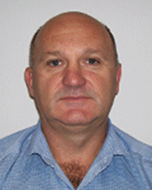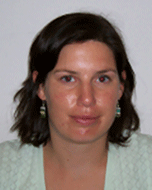Making the most of mature field opportunities—2009 Cobia infill drilling campaign*
Andy Zannetos A , Will Leonard A , Grant Clements A , Dean Grant A , Andrew Miatello A , Anna Galloway A , Abdul Aziz Rahim A B and Julien Celerier AA Esso Australia Ltd Esso Australia 12 Riverside Quay SOUTHBANK Australia, 3006. Email: andy.zannetos@exxonmobil.com
B ExxonMobil Exploration and Production, Malaysia Inc
The APPEA Journal 50(2) 703-703 https://doi.org/10.1071/AJ09067
Published: 2010
Abstract
The Halibut and Fortescue oil fields are located in the Gippsland Basin, offshore Australia, and have produced 1.3 billion barrels of oil since the 1970s. The fields have been developed from three platforms—Cobia, Halibut and Fortescue—using multiple infill drilling campaigns post initial development.
A strong emphasis has been placed on leveraging the latest technology to optimise development of these fields. The advent of high resolution 3D seismic surveys and improved processing techniques have proved invaluable in recent programs. This is illustrated by the 2009 Cobia infill program where the nine wells drilled over six months have increased field production from an average of 4,000 to 20,000 barrels of oil per day.
Key success elements for this program included the use of new 3D re-processing technology, the application of past learnings, and the in-house enhancement of 3D data, in addition to seismic modelling and the integration of production data. The maturing of individual leads to economically viable targets used fit-for-purpose analysis of the data in which 3D seismic, well and production data were integrated and later built into 3D geologic models. Location choice was also important to the success of the program, where several potential targets were rejected after failing to meet technical or economic criteria. Drilling performance was exceptional, with all nine wells drilled within budget.
The new 2009 Cobia infill wells have already produced over 2.2 million barrels of oil and show how mature fields can be re-invigorated through the use of re-processed 3D seismic and integrated data analysis.
Keywords: mature field, 2009, Cobia, Halibut, Fortescue, Gippsland Basin, offshore Australia, platform infill drilling, production, Latrobe Group, opportunity, teamwork, post-stack processing, controlled beam migration, risk, learnings

Andy Zannetos graduated from Deakin University in 1981 with a BSc majoring in physics. With 29 years of experience with ExxonMobil affiliated companies, he has worked exploration and production projects both within Australia and overseas. He also worked for two years in a core technology group within the heritage Exxon organisation in Houston. He is presently assigned to the Gippsland Production Geoscience group as a senior geoscientist. Member: PESA. Awards: APPEA 2006 Best Technical Paper. |

Will Leonard graduated from The University of Melbourne with BSc (Hons) majoring in geology in 1996 (David Evan Thomas Medal recipient, GSA). He then joined Plutonic Resources as an underground production and development geologist at Darlot gold mine, Western Australia. In 1998 he returned to The University of Melbourne to undertake and complete a PhD examining carbonate diagenesis in the Lower Carboniferous sequence in Ireland. Following several years contractual work for Esso Australia, he moved to a permanent role in 2004, initially working in exploration in a variety of basins throughout southeast Asia including Indonesia, Australia and New Zealand. He joined the Gippsland Production team in 2006 where his work has focused on maximising oil production from the Central Fields. Member: AAPG, PESA.
|

Grant Clements joined ExxonMobil in 2007 commencing work as a reservoir engineer supporting the offshore oil and gas platforms in the Gippsland Basin. He has worked as the drilling program coordinator for Cobia, and has completed gas cap blowdown, gas injection EOR and workover projects on several other platforms in the Bass Strait. He holds a Bachelor of Engineering (chemical, Hons) from The University of Queensland. Member: SPE. |

Dean Grant is a mechanical engineering graduate from the University of Melbourne. He has had a 25-year career in the Australian oil industry working in a petroleum/reservoir engineering role for a range of companies and in most basins in Australia. Dean began his career with CSR Oil and Gas, subsequently moving to Alliance Oil Development and then Woodside Petroleum (Vamgas) before establishing his own reservoir engineering consulting business. He began consulting to Esso Australia in 1996 when he became involved in development planning work for the Bass Strait oil fields, moving into a permanent role as a senior reservoir engineer in 2004. Member: SPE. |

Andrew Miatello joined ExxonMobil in 2006 as a graduate in the Subsurface Engineering Group. He was involved in well integrity, corrosion mitigation programs, and planning, design and surveillance for workovers and completions in the Gippsland Basin. He has recently moved to the Drilling Group as a completions engineer working on the Papua New Guinea LNG project. He holds a Bachelor of Mechanical Engineering from RMIT University. |

Anna Galloway graduated from the University of Melbourne in 2002 with a Bachelor of Environmental Engineering (Hons, 1st Class) and a Bachelor of Commerce. She began working with ExxonMobil as an environmental advisor during 2003 before joining the Reservoir Surveillance Group as a reservoir surveillance engineer. She is now working as an environmental and regulatory advisor for ExxonMobil Development Company. |

Abdul Aziz Abdul Rahim graduated from University of Malaya with BSc in geology (Hons) in 1999 and an MSc in petroleum geoscience from the University Brunei Darussalam the following year. Aziz joined Esso Production Malaysia Incorporated in 2000 and since then has worked on various mature and new field oil and gas developments in the Malay Basin. In April 2006, he transferred to Esso Australia Pty Ltd, a subsidiary of ExxonMobil Corp, where he worked on North West Shelf exploration and Gippsland production. In the Gippsland Production Group, he played a significant role in opportunity-generation for the Halibut, Fortescue and Cobia in-fill drilling programs. Aziz has now returned to Malaysia where he is the team lead for opportunity-generation activities supporting the majority of infill drilling programs in the Malay Basin. Member: Geological Society of Malaysia. |

Julien Celerier joined ExxonMobil in 2007 after gaining a BSc (Hons) from the University of Melbourne and later completing a PhD in Himalayan Tectonics at the Australian National University. During his time in the petroleum industry, he has worked in a variety of production and exploration roles in basins across Australia and is presently working on exploration projects in the Asia-Pacific region. |


